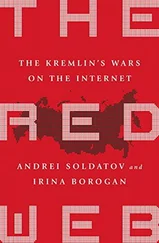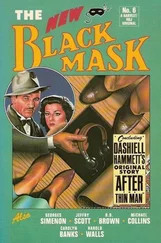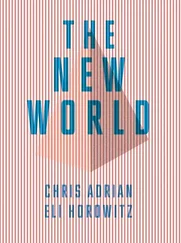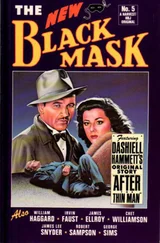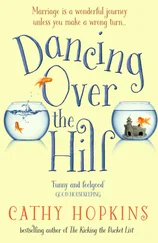Well, that is really everything I wanted to say to you about Verklärte Nacht , but I would like to give you an opportunity, if you have any questions about these things I have touched on, an opportunity to have those questions answered. Can I assume, after everything I have said, that you are sufficiently familiar with the work to reconstruct approximately what I have said? Because obviously I was unable to carry out a typical thematic analysis here, which would also be entirely beside the point of such a lecture. So, do you have any questions about it? – Yes? Didn’t someone say something?
Question from the auditorium : Just something that may be more peripheral. Should one view the arrangement for string orchestra as authentic, are they equally valid, the chamber work and the one for string orchestra?
Adorno : I think Professor Kolisch can answer that question better than I can. Rudi, what do you think?
Rudolf Kolisch : Yes, Schoenberg approved of both performances, though he preferred the original version.
Adorno : He preferred the original version?
Kolisch : Yes.
Adorno : Yes.
Kolisch : The string orchestra was […]. He made the arrangement himself.
Adorno : The arrangement is his own, yes.
Kolisch : Yes. […]
Adorno : Well, then I can move on to Gurrelieder . So Gurrelieder has no opus number. That is a strange business; I do not know the exact reason. It probably has something to do with the fact that after finishing work on Gurrelieder – I think it was as early as 1900 – Schoenberg interrupted the orchestration at a certain point, either at the melodrama or the interlude before the melodrama in the third part, and completed it only in 1910, around the time of Die glückliche Hand . In its substance, however, this work is obviously an early Schoenbergian work through and through and should not be placed alongside those that were later changed. Although it is very typical of Schoenberg that all manner of works accompanied him over a very long period, and so his ambition to complete everything and present finished results, this ambition was not terribly great on his part, as indeed the idea of the result and the chef d’oeuvre and completing things are not really decisive with the greatest artists. Just think of Michelangelo: almost all of his major works somehow remained fragments. And this tendency towards the fragmentary is very strong in Schoenberg, and one can perhaps discover something of this kind in Gurrelieder , where the orchestration of the later parts indeed differs greatly from the rest. So, Gurrelieder is a kind of – well, one really has to call it a kind of Liederspiel , a song cycle, in which the very short second part is really just one great song that is contrasted with the other songs purely because of its very emphatic character, and in the third part this is combined with choral elements, namely the male choruses sung by King Waldemar’s troops, then with the long orchestral interlude and the melodrama ‘The Wild Hunt of the Summer Wind’ and the big final chorus. The approach in Gurrelieder as a whole is a two-pronged one, if you will, as I touched on with reference to Verklärte Nacht . On the one hand, it is a work that uses leitmotifs, much like Wagner’s music dramas, and those of you who still own the old version, the long version of Berg’s analysis 12– I lost mine in the confusion of emigration – can find very detailed analyses of these leitmotif relationships there. At the same time, the piece is written in such a way that the characters of the individual songs are set off against one another, set apart from one another very sharply. Berg, who is largely – I think this has not been sufficiently emphasized until now – Berg’s specific technique consists largely in further developing the technical achievements of the early Schoenberg. While Schoenberg himself then continued in a completely different direction after op. 10, one might say that Berg transferred all the technical advances of the early Schoenberg to a freer material, and there are two works in particular by Schoenberg that were decisive for Berg’s entire development. The first is Gurrelieder and the second is the First Chamber Symphony, which you will more or less find with all its structural elements if you look at the Piano Sonata by Berg, so that Berg’s development must be understood largely in relation to these things and not so much to the later Schoenberg. That applies to Gurrelieder in a very special sense, in a twofold sense. As a teacher, Berg said with a certain – how shall I put it? – rigidity, though there was no doubt something very correct and profound about it – and I assume that this is a distinction he adopted from Schoenberg – that there are really two fundamentally different approaches to shaping music. On the one hand, there is the symphonic or sonata-like way, which I would describe as one where the element of mediation, of dynamic mediation and expansion, is decisive; and then there is a compositional method based on contrasting individual characters, each of them as self-contained as possible. If you look at Schoenberg’s output from this perspective, you will really find that there are a number of works of both types; there are actually quite pure examples of both these types. So, it is hardly worthy of comment that the major instrumental works generally belong to the symphonic type. On the other hand, works like the op. 15 George songs or Pierrot lunaire are extreme examples of a characterization of individual elements that are effective chiefly because of the contrasts, and because each piece does not lead smoothly into the next but is always set off very clearly against it. To say something about the interpretation of these works by Schoenberg, it is therefore one of the most important tasks to set off the George songs or the individual pieces in Pierrot against one another as sharply as possible through the characterization, the vocal tone, the instrumental tone and whatever else there is, to avoid at all costs any semblance of continuity; that is not what these works aim for; they aim for the opposite.
Now, a work such as Gurrelieder – if you proceed from this typology, which remained quite fundamental for the whole school and has not really been examined sufficiently – if one views Gurrelieder in these terms for a moment, it is really in the middle between the two types. So, on the one hand, Gurrelieder is a very sharply characterized work in the sense of contrasting, very clearly separated individual songlike numbers. On the other hand, it consistently seeks to mediate between the parts, not to set them off against one another. And this happens in the form of the orchestral interludes, which are of varying lengths, but in two cases there are very long orchestral interludes, namely before ‘Lied der Waldtaube’ [Song of the wood pigeon], which brings the news of Tove’s death, and then before the last part, ‘The Wild Hunt of the Summer Wind’, which marks the real shift from the mythological element of the work to that of natural symbolism. And these big orchestral interludes are really development sections in an exact sense, developments of the themes that appear in the songs and the vocal sections of the work. Here one finds exactly the same principle that one finds in Berg’s Wozzeck in the large orchestral interludes, where the motifs first introduced in a relatively simple way to reinforce the vividness of the scenes are then developed and take on lives of their own by various means, especially through a very rich use of imitation. In Wozzeck , much as in Gurrelieder , you also have this very pointed contrasting characterization of each individual scene – each individual scene in Wozzeck has its very specific colour, indeed many scenes even have their own orchestra: the scene, that short adagio scene in the slow movement, is mostly written for chamber orchestra, or the final scene is scored for a very reduced orchestra, and subsequently in Lulu , as you know, all this was taken much further. So you have this urge to characterize individual parts combined with an urge towards a symphonic unification of the elements, and one might say that, in Berg especially, one of the main impulses was to let these two elements, the symphonic and the characterizing – if one wanted to use a very stupid term, then the genre piece, which always represents a very specific genre – become interwoven, and the central model for that is Gurrelieder , where the big orchestral interludes have that character. Now, it is extremely gratifying to follow, especially in Gurrelieder , by what subtle means this characterization is achieved. In its lyricism, its truly lyrical melodies, the first part of Gurrelieder is among the greatest jewels in all of music. One now sees that the nature poetry often used here prefers a certain quality of muted colour, and this muted colour, this dulling of colours, had a great effect on Schoenberg’s later orchestra, which dispenses almost entirely with the sumptuous, flowering string tone; and, if we have now become so suspicious towards any kind of rich, rounded tutti tone, then this is an impulse that stems from this taste for equivocal, muted colours. One of the basic experiences embodied by all of Schoenberg’s music is that all that glitters is actually dirt. And I think this aversion to shimmer, to things that shimmer on the outside, despite the incredible wealth of colours, this is something you can already find very prominently in Gurrelieder , where you will find that, in proceeding from the augmented triads in the first song, which are similar to those used by Wagner, that this process of dimming and muting results in whole-tone chords. I will play you a few bars from the first song [plays Gurrelieder , Part 1]. Now, let me show you how such a melody is truly free from the sequencing principle, and how the connection here is brought about through this gliding [plays] of whole-tone chords and augmented triads into one another. You can also observe here that, unlike Wagner, Schoenberg almost never uses chromatic bass lines, or has only partly chromatic ones; there are always stronger diatonic progressions alternating with the chromatic ones [plays]. Now things turn chromatic [plays], then the strong progression again [plays], now chromatic again [plays]. Now, the melody goes like this [plays]. But now it continues quite differently [plays]. The relationship between the two parts is that of antecedent and consequent, or that of variation. Nonetheless, the second part does not repeat the first but is a kind of answer to it, like this [plays]. This is the first [plays]. So he arrives at the tonic again, but is already working with completely different melodic material. And now we have this chromatic transition [plays], now a different component [plays], and now a kind of consequent in the major, which I do not need to play for you. So then a second verse begins; it is a variation [plays] on the first, a high degree of variation. You see, at the start we had this [plays]. Now you also have these fifths, these fourths [plays], fifth [plays]. The harmonies themselves, as you all know, obviously come from the sleep harmonies in the Ring , 13but, whereas Wagner constantly sequences them, they are used here as independent chords that even act as degrees, with a complete avoidance of sequences. Now, Schoenberg’s sense of form also reveals itself in something else. He does not content himself with contrasting the minor part and the major part but instead, once the major part is finished, the second time, he has the feeling that the whole calls for a rounding-off of sorts and introduces something completely independent, namely an Abgesang [plays]. Note the harmony that arises here [plays]. This is taken from the prelude [plays], and so on.
Читать дальше

